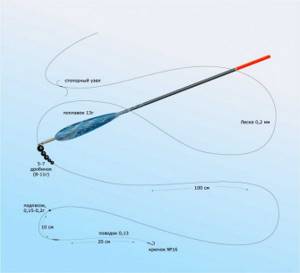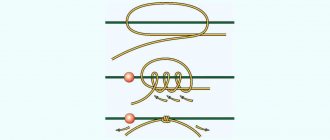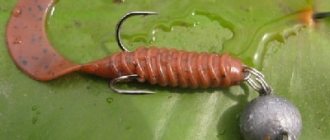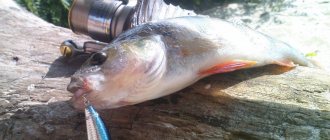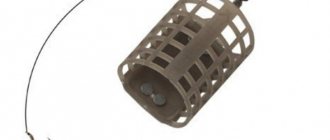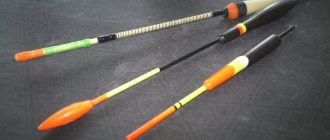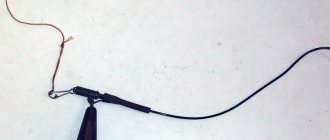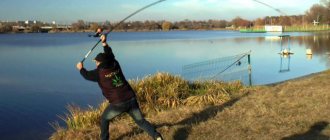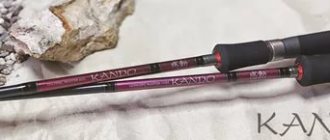In cases where you have to catch cautious fish at a distance from the shore, one of the effective ways to solve the problem is a float for long-distance casting. Fishing with float rigs is a favorite of many anglers for the spectacular nature of the process. Visual observation of the beginning of the bite, its development and, of course, the moment of hooking cannot be compared with any other fishing method in its intrigue.
Not so long ago, float rigs were in most cases used for catching fish at short distances, but with the advent of special long-range models of alarms capable of delivering installations of 50 meters or more, a whole branch of float fishing appeared at promising fish holding points remote from the shore. The presented article will help the fisherman study the topic of floats for long-distance casting and will introduce the reader to the principles of catching fish at long distances, with the nuances of assembling and completing a float rod.
What should the float be like?
Long-cast fishing places a number of demands on the float, which in this type of installation performs several functions simultaneously, being both a signaling device indicating the contact of the fish with the bait and, at the same time, a sinker that contributes to the flight range of the equipment and stabilization of its position after entering the water. As a result of the established practice of hunting at a distance, the spindle-shaped shape of the alarm with a long antenna was recognized as one of the most rational float options.
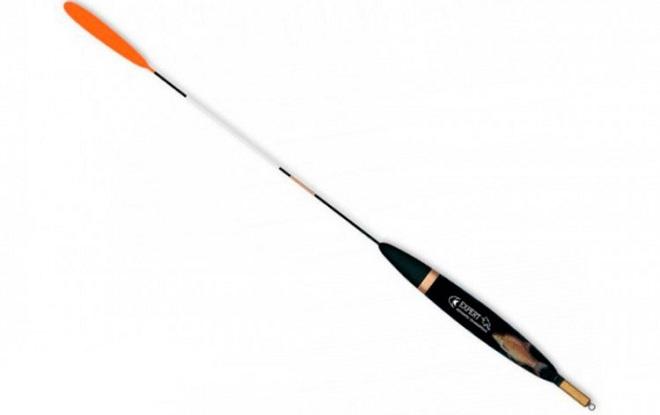
In appearance, such signaling devices resemble a torpedo or an arrow with a massive tip. Since it is difficult to throw a light float over a long distance, long-range signaling devices have an increased weight compared to a standard product, sometimes reaching several tens of grams. In addition, for clear visual observation of the fishing process, a high and noticeable antenna is required, the length of which can reach 30 or even 50 cm. Summarizing this information, we can say that floats for long-distance casting must have high aerodynamic properties and be visible at long distances catching
Characteristics and features of long-range spinning rods
To determine which spinning rod is best suited for long-distance casting, it is important to take into account the basic characteristics of the gear. All elements of the gear must be harmoniously combined and improve each other’s long-range parameters.
The important elements are:
- coil;
- correct fishing line;
- suitable test form;
- type of bait;
- equipment, etc.
Read more
Which reel to choose for a float fishing rod?
The key element is the spinning rod; it has the greatest importance in casting distance.
Many anglers give their own advice on how to choose a spinning rod for a beginner, based on experience. Most fishermen agree that the choice of spinning rods should be made based on fishing technique and the characteristics of the spinning rod.
Main characteristics and description of spinning rod for long casting:
- The length of the spinning rod for long casting has the greatest influence on casting. As the length of the rod increases, long-range characteristics increase, the casting process becomes more complicated and the number of suitable places narrows;
- build. The correct action gives the necessary rigidity to the rod and allows you to deliver the bait as far as possible;
- type of pass rings. With low-quality and narrow guides, the possible casting distance is reduced by 20-50%.

Spinning rod has the greatest importance in casting distance
Many manufacturers have a whole series of sea fishing rods in their assortment, designed for long-distance fishing. Marine spinning rods for long-distance casting are more expensive than the classic versions, but they are more durable and can easily handle fish weighing 10-30 kg or more.
Features of choice
In the vast majority of fishing over long distances, sliding type alarms with one attachment point on the keel of the product are used.
Important! Long-range sliding floats look like a ballistic missile with an elongated tail section similar to an arrow.
If the body or torpedo, the thickened part of the product, reaches dimensions of 30–120 mm, then the arrow-shaped part of the accessory of 200–500 mm is by no means uncommon. The smallest torpedoes weigh from three grams. The keel design implies the presence of its own shipping, made of lead pellets or plates. The antenna is made of plastic and has a thickened boss at its tip for visibility of the signaling device and balancing of the product.
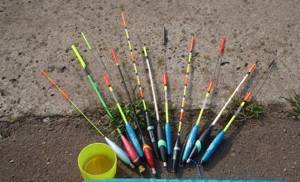
Some models are equipped with replaceable antennas that differ in length and color, which allows the accessory to be used in different weather conditions and light intensity. The bottom of the float is painted in natural tones, masking the equipment in the water. The antenna should be brightly colored to catch the eye, allowing the fisherman to comfortably monitor the progress of fishing from afar.
Long casting rod and reel
A fishing rod for long casting with a sliding float implies the use of match plug tackle. The length of a match rod, the blank of which is equipped with guide rings, is at least 3.5 meters.
Important! Tackle with a fast action ensures casting distance and accuracy more effectively.
It is possible to use telescopic rods with lengths from 3 to 5 meters, but it is more difficult to work on long and accurate casts with a telescopic rod, due to its greater weight and insufficiently high balance compared to the plug-in version. When choosing reels, preference is given to small or medium-sized spinning mechanisms. A reel with a spool of 2000–3000 units and a gear ratio of at least 5 will allow you to comfortably catch and play various fish. This spool can accommodate up to 150 meters of thin line, and the high gear ratio makes it possible to quickly catch small-sized fish.
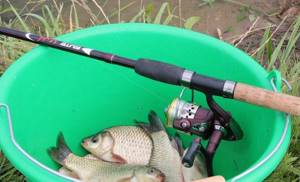
The presence of an adjustable clutch will help you adjust the gear for fishing without losing the rigs of larger fish. As a rule, when hunting for small and medium-sized fish, mechanisms with a front brake are used, and when hunting for a large trophy, they use inertia-free gear with brake settings at the rear of the device.
How to assemble float tackle for long casting
Having chosen a rod for long casting and equipped it with a spinning reel, the angler begins to assemble the equipment based on the upcoming fishing conditions and the fish expected to be caught. Fishing conditions include weather conditions in the analysis, namely wind strength and wave height, depth and distance of bait supply, as well as fish activity. These parameters influence the choice of the body mass of the float and the size of its antenna, and, accordingly, the shipment. In windy weather, the stability of the alarm is achieved by a larger load, deepening the floats further. In calm weather, the antenna is raised higher above the water to the level of its connection with the torpedo of the main body.
The trophy expected in the catch, or rather its mass, will be the initial data for selecting the diameter of the fishing line and the breaking load of the thread material. To make the tackle more delicate and thinner, it is possible to include in the installation devices that can absorb the loads during fishing or, at the final stage of fighting fish, to increase the breaking load of the cord, which in this case helps to put into practice the use of a shock leader.
The use of auxiliary parts and devices in the form of swivels, fasteners and carabiners allows you to reduce the likelihood of tangling of fishing line and installation components, as well as to be able to quickly change elements that are not suitable for fishing conditions. We will dwell on these installation components in more detail, focusing on their types and functional features.
Sinker

When assembling float tackle for long-distance casting, special attention is paid not only to the selection of the load according to its shape, but also to its location on the main cord.
Important! The distribution of the load along the length of the thread affects the sensitivity of the tackle.
If fishing is carried out in calm and calm water conditions, and the fish are highly active, then the distribution of shipment has virtually no effect on the progress of fishing. Bites are clearly visible to the fisherman, and the fish does not pay attention to installation flaws due to increased nutrition. In this case, it is enough to install only one weight on the fishing line, which will play the role of a lower stopper, although you need to put a damper in front of it to smooth out impacts during casting and winding the line, breaking the floats and deforming the fishing line. Large lead shot, or an olive pinched on a fishing line, will do an excellent job of solving the problem of balancing the alarm. Under conditions of wind load and passive bite, the shipment is made spaced, placing large masses under the float, and reducing them towards the leash, mounting smaller weights.
fishing line
Long-distance casting rods are equipped with monofilament lines, their diameter being selected based on the expected fish to be caught. From fishing practice, it has developed that effective line diameters are threads with a thickness of 0.18 to 0.20 mm. The breaking load of such a monofilament, combined with the adjustment of the clutch, is enough to catch fish of average size, up to one and a half kilograms. The fishing line is selected with properties that facilitate its rapid sinking, as well as with low memory, which greatly simplifies fishing, reducing the windage of the thread and making installation more stable in adverse weather conditions. The color of the forest, which is close in shades to the color of the water in the fished reservoir, favors the stability of the bite and is less alarming for fish approaching the feeding point. The thickness of the fishing line used for tying leashes in all cases should be lower than the diameter of the main fishing line.
Shock leader
A shock leader is one of the ways to increase the reliability of equipment. Its installation helps to thin the main line, allowing you to catch wary and shy fish. The essence of the device is to install at the end of the main cord a piece of fishing line of 5–7 meters, which in its diameter and breaking load exceeds the parameters of the base. Fish caught at a long distance, far from the shore, initially exhibits little resistance when landing. But the closer the trophy is pulled to the shallows or coastline, the more intense the struggle becomes. At this moment, a thin thread will already be wound onto the spool of the reel and a thick cord will come into operation, capable of withstanding overload and preserving the trophy. It makes sense to assemble a fishing rod for long-distance casting using a shock leader, knowing about the possibility of catching large-sized fish that can break the main thread.
Swivels
Gear for long casting cannot be assembled without the use of swivels. This auxiliary element of the equipment prevents the line from twisting. In long-distance fishing, such a negative factor is present at the moment of reeling in the equipment. When fishing for fish or checking for the integrity and presence of bait, the cord is wound up using a spinning reel. Rotational movements are transmitted to the float itself, as well as to the bait attached to the hook. The swivels compensate for the rotational moment of the main mounting elements, scrolling along their axis and thereby eliminating twisting of the tackle cord. The size of the swivels is selected based on the size of the equipment elements, trying to clutter up the installation as little as possible, using miniature parts.
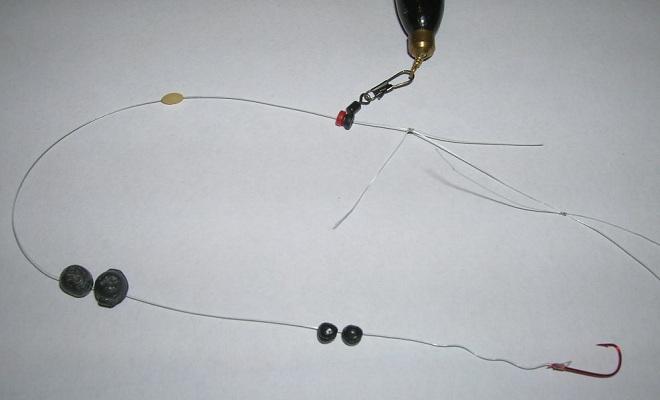
Sliding elements
You can ensure the float slides in the rig on a fishing rod for long casting using a special bushing carabiner, which is installed between the stoppers or locking nodes on the cord of the tackle. Depending on the weight of the alarm and the thickness of the fishing line, the sleeve is made of fluoroplastic, plastic or brass. The use of the device promotes high-quality sliding of the float, as well as quick replacement of the accessory as needed, in changing conditions. In addition to the sleeve and fastener, the device is equipped with a swivel, the role of which we have already mentioned above.
Gear assembly
Now, in order to assemble all the gear together, you need to wind the main fishing line (0.12 mm) onto the spool and gradually thread one end of it through all the guide rings. Next, we attach a shock leader (0.18 mm) to it. The correct size of a piece of fishing line for this element of equipment is 2 lengths of the fishing rod used and about 5-6 more turns of fishing line on the spool.
The sliding part of the float is threaded through the end of the shock leader line. In this case, the carabiner is fixed with a piece of silicone tube. Having secured the upper swivel to one of the ends of the shock leader line, you need to carefully unwind the assembled part of the equipment from the reel.
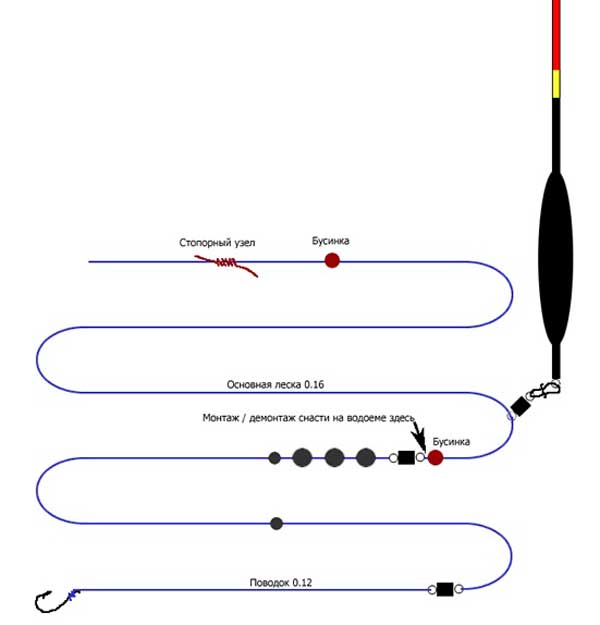
Stopper knots
The final stage of assembling the tackle is tying the stop knots and then attaching the float. It is important to take into account that the fishing line for the stop knot must have the same diameter as the one to which it will be attached. Fastening knots of this type limits the movement of the float along the fishing line, and makes it possible to fix it at a certain depth.
The optimal number of knots is 2. One is not tightened too much, since it is responsible for lowering the float and moving it, but it must withstand more than one throw with the rod. And immediately after the fisherman finds the depth he needs, the first knot is overlapped by the second, the last one must be tightened tightly.
It is important to leave the ends of the fishing line at the knot at least 2 cm in size. If they are shorter, the fishing line will not be able to lie normally and will begin to tangle. In this case, you can use a sinker as a depth gauge. Therefore, it needs to be removed, while the cambrics are moved closer to the leash swivel, then put on and fixed again. Having set the approximate depth with a knot, you can try casting. And if the float antenna begins to be visible above the water surface, you can continue to adjust the equipment in search of the desired depth.
We recommend reading: Review of the TOP 10 rating of wobblers for zander fishing
But if the float is visible from the surface of the water with its entire working body, this is a guarantee that the olive has touched the bottom.

Installation nuances
When considering the nuances of long-range installations, it is taken into account that signaling devices with rounded shapes have worse flight qualities than spindle-shaped products, so a float for long-distance casting, especially one made by hand, is designed in advance to be torpedo-shaped, and sometimes retrofitted with special flaps to increase aerodynamic properties. Thin lines sink faster than threads with large diameters, which is important when fishing in windy weather and on currents. The thread comes off more efficiently from a conical spool than from cylindrical types, therefore, this factor can affect the casting distance. When the float is firmly attached, long-range and targeted casting is easier to do by bringing the load closer to the keel of the product. With a sliding rig, on the contrary, the load is shifted towards the leash.
Choosing the right floats and fishing line for your rig
Before learning how to ship a sliding float, you need to choose the right equipment, focusing on a number of factors.
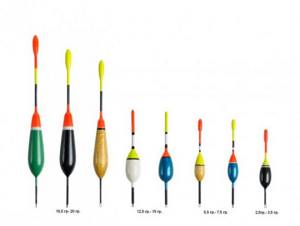
Domestic and foreign manufacturers of gear offer a huge variety of universal and special accessories, when selecting which it is necessary to take into account the following factors:
- fishing conditions and features of the fished reservoir;
- weather and fishing season, reservoir depth and fish activity;
- level of fish activity and chosen fishing method;
- materials for making the float and properties of a particular model;

When choosing a fishing line, it is necessary to take into account its rigidity and strength, the presence of so-called shape memory, the color and thickness of the equipment.
These operational parameters and the physical properties of the floats and fishing line will help to correctly and competently carry out the loading process, which guarantees increased fishing efficiency.
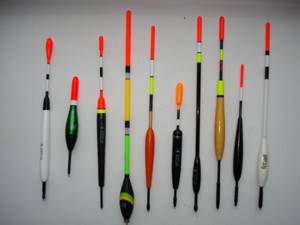
Long casting rod with sliding float

We begin the installation of a fishing rod for long-distance casting by installing the upper stopper strung on the main cord of the tackle. Having installed the stopper on the thread, a bushing carabiner is placed on the fishing line, to which the floats will be attached, and the device itself will facilitate the free movement of the alarm along the fishing line within the length limited by the stoppers. Having threaded the lower stopper, they begin to ship the alarm, mounting a garland of sinkers that stabilize the float on the water. The shipment ends at the fastener or loop formed at the end of the line. Depending on the fishing strategy, either a leash with a hook is attached to the loop, or a shock leader is installed between these elements. Having collected the elements together, they set the bait and begin fishing. In the process of assembling the tackle, I would like to pay special attention to such an operation as installing stoppers or tying specialized knots that help limit the stroke of the float, which we will talk about in the continuation of the article.
Stopper knots
A sliding float for long casting is designed not only to give the angler the opportunity to see bites, but also to deliver the bait to the desired water horizon. And as you know, sliding equipment allows you to fish regardless of the depth of the reservoir, but for this you need to competently be able to limit the distance the float moves along the fishing line. The fastest way for these purposes is to use rubber or silicone stoppers, mounting them on the fishing line at the points required by the fishing conditions. But experienced float anglers advise learning how to tie stopper knots yourself.
Important! Stopper knots made from fishing line are much smaller in size and softer than the factory rubber stopper, which gives advantages when casting, providing virtually no resistance when the line passes through the guide rings of the rod.
The easiest way to knit a locking knot is using the single locking knot technique or using the double locking knot technology known as kremkus.
How to adjust tackle for quality casting
Before casting, check that the float has dropped to the lower stop and that the weights are not tangled with each other. Adjustment of the gear begins with measuring the depth. For these purposes, the equipment is sent to the fished point, moving the upper stopper along the line to the mark at which the float will be vertically located in the water, sinking to the border of the connection of the spindle-shaped body with the antenna. With a blind type of alarm mount, which is more suitable for fishing in currents of moderate strength, the float is moved along the line experimentally until the horizon required for fishing is found.
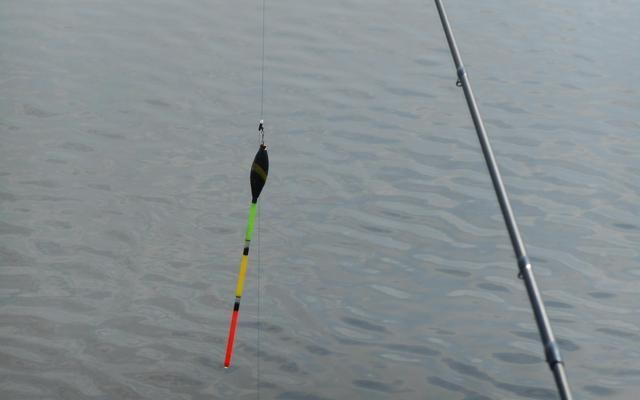
Having determined the bait supply horizon, they begin fishing, determining the activity of the fish. Having received frequent and successful bites, the equipment will not require further adjustment. If the fishing is characterized by a depressed bite or the fish is not detected after biting, the equipment is thinned, spreading the load along the length of the fishing line as far as possible, pellet from pellet, and lengthening the leader.
Secrets of casting technique
The technique for presenting equipment for long-distance casting has many similarities with throwing with a spinning rod. Before casting, inspect the place from which they intend to make the throw and make sure that the swing is not interfered with by obstacles, such as branches, bushes, reeds or other objects. After this, the line with the equipment hangs down about one and a half meters from the tip of the tackle and swings. As a rule, the long-range technique of swinging from behind is different.
Having made the cast, the rod is smoothly lowered to a position where the rod is on a line parallel to the surface of the water and they wait for the rig to splash down, after which the quiver tip of the tackle is dipped into the water, which helps to sink the line faster and thereby stabilize the rig at the desired point. When the float takes its working position, the tackle can be placed on a stand and wait for a bite.
What is the correct loading procedure?
By watching the proposed video on how to properly load a float, you can visually familiarize yourself with the loading technology used. This simple method will help you quickly and easily, at home, prepare different gear tied to a fishing rod, ensuring the effective operation of the equipment used:
- underload, characterized by the use of weights of insufficient weight, while the float buoy is visible above the surface of the water;
- overload is easily determined by the significant immersion of the upper rod of the float under water, which leads to the fish disappearing.
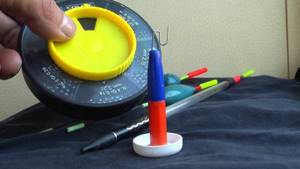
The correct weight of the float is considered to be the state when only the antenna of the float is visible above the water surface, and its buoy is completely immersed in the water.

The loading procedure can be carried out at home, but for proper and accurate preparation of equipment, it is recommended to carry out this process directly on the pond, before starting fishing.
